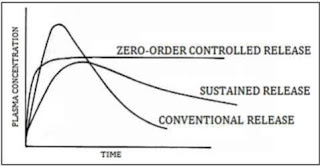Whether it is first order or zero order release pattern it can be achieved by using a suitable binder
Yes, it is possible to achieve both first-order and zero-order release patterns by using suitable binders in drug formulations.
The first-order release pattern refers to the
release of a drug from a dosage form at a rate that decreases exponentially
over time. This type of release is desirable for drugs that need to be absorbed
slowly and steadily over a prolonged period.
On the other hand, the zero-order release pattern
refers to the release of a drug at a constant rate over time. This type of
release is desirable for drugs that need to maintain a constant level of drug
concentration in the bloodstream.
The choice of binder can affect the drug release
rate and mechanism. For example, hydrophilic polymers like hydroxypropyl
methylcellulose (HPMC) can be used to achieve a first-order release pattern by
forming a gel-like layer around the drug particles, which controls the drug
release rate.
In contrast, an insoluble matrix made of a polymer
such as ethyl cellulose can be used to achieve zero-order release by
controlling the diffusion of the drug through the matrix.
Therefore, the selection of suitable binders and
their formulation in drug products can be critical to achieving the desired
drug release profile.



Comments
Post a Comment
Thanks